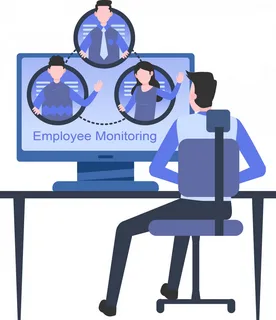In today’s fast-paced digital landscape, businesses face the challenge of maintaining productivity while ensuring data security. With the rise of remote work and the increasing dependence on digital communication channels, companies need effective tools to monitor employee activities, safeguard sensitive information, and enhance overall efficiency. This is where employee monitoring software for employees , Data Loss Prevention (DLP) tools, and employee monitoring solutions come into play.
Understanding Employee Monitoring Software
Employee monitoring software is designed to track and record employee activities on company-owned devices, such as computers, laptops, and smartphones. It provides valuable insights into how employees utilize their time during work hours, helping employers identify areas for improvement and boost productivity. Key features of employee monitoring software may include:
- Time Tracking: Monitor the time spent on various tasks and projects to optimize resource allocation and streamline workflows.
- Activity Logging: Record keystrokes, website visits, application usage, and document access to ensure compliance with company policies and regulations.
- Screen Capture: Capture screenshots at regular intervals to visualize employee desktop activities and identify potential issues or inefficiencies.
- Productivity Analysis: Generate reports and analytics to evaluate individual and team performance, identify top performers, and address performance bottlenecks.
- Remote Monitoring: Enable monitoring of remote employees, ensuring consistent oversight and accountability regardless of location.
Harnessing the Power of DLP Tools
Data Loss Prevention dlp tool plays a crucial role in safeguarding sensitive company information and preventing data breaches. These tools help organizations monitor, detect, and mitigate data exfiltration risks by implementing policies and controls to protect confidential data. Key features of DLP tools may include:
- Content Inspection: Scan files, emails, and other data transmissions for sensitive information such as Personally Identifiable Information (PII), financial data, or intellectual property.
- Policy Enforcement: Define and enforce data protection policies to prevent unauthorized access, sharing, or leakage of sensitive information.
- Real-time Monitoring: Monitor data movement in real-time across networks, endpoints, and cloud applications to detect and respond to security incidents promptly.
- Encryption and Redaction: Encrypt sensitive data at rest and in transit, and redact confidential information from documents to minimize the risk of exposure.
- Compliance Reporting: Generate compliance reports and audit trails to demonstrate adherence to regulatory requirements and industry standards.
Implementing Employee Monitoring Solutions
By integrating employee monitoring software with dlp tools, organizations can create a comprehensive solution to enhance workplace efficiency and security. Employee monitoring solutions combine the capabilities of both technologies to provide a holistic approach to workforce management and data protection. Key benefits of implementing employee monitoring solutions include:
- Increased Productivity: Gain insights into employee behavior and work patterns to identify areas for improvement and optimize resource allocation.
- Enhanced Security: Monitor employee activities to detect and prevent insider threats, data breaches, and compliance violations in real-time.
- Regulatory Compliance: Ensure compliance with data privacy regulations such as GDPR, HIPAA, or CCPA by implementing robust data protection measures and maintaining audit trails.
- Remote Work Support: Enable remote monitoring capabilities to oversee off-site employees and maintain productivity levels across distributed teams.
- Employee Accountability: Promote accountability and transparency within the organization by establishing clear policies and expectations regarding acceptable computer and internet usage.
In conclusion, employee monitoring software, DLP tools, and employee monitoring solutions play a crucial role in optimizing workplace efficiency, safeguarding sensitive data, and ensuring regulatory compliance. By leveraging these technologies effectively, businesses can create a secure and productive work environment conducive to growth and success in today’s digital age.

